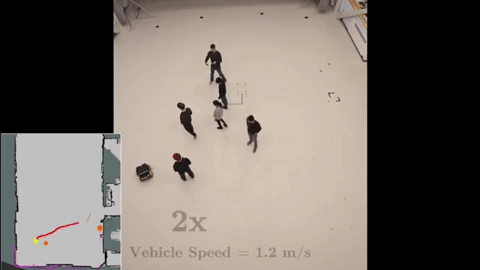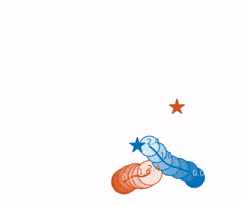gym-collision-avoidance: Documentation¶
In this multiagent environment, agents try to get to their own goal location (specified at the start of each episode) by using one of many collision avoidance policies implemented. Episodes end when agents reach their goal, collide, or timeout. Agents can observe the environment through several types of sensors, act according to pre-implemented and extendable policies, and behave according to customizable dynamics models.
Objective: Provide a flexible codebase, reduce time spent re-implementing existing works, and establish baselines for multiagent collision avoidance problems.

Formation Control |

Policies Deployable on Hardware |

Many-Agent Scenarios |

Random Scenarios |
Policies Implemented¶
Learning-based:
- SA-CADRL: Socially Aware Motion Planning with Deep Reinforcement Learning
- GA3C-CADRL: Motion Planning Among Dynamic, Decision-Making Agents with Deep Reinforcement Learning
- DRL_Long: Towards Optimally Decentralized Multi-Robot Collision Avoidance via Deep Reinforcement Learning
Model-based:
- RVO/ORCA: Python-RVO2
- Non-Cooperative (constant velocity toward goal position)
- Static (zero velocity)
Desired Additions:
- DWA
- Social Forces
- Additional learning-based methods
- Other model-based methods
- Centralized planners
- …
If you find this code useful, please consider citing:¶
Conference version of paper:
@inproceedings{Everett18_IROS,
address = {Madrid, Spain},
author = {Everett, Michael and Chen, Yu Fan and How, Jonathan P.},
booktitle = {IEEE/RSJ International Conference on Intelligent Robots and Systems (IROS)},
date-modified = {2018-10-03 06:18:08 -0400},
month = sep,
title = {Motion Planning Among Dynamic, Decision-Making Agents with Deep Reinforcement Learning},
year = {2018},
url = {https://arxiv.org/pdf/1805.01956.pdf},
bdsk-url-1 = {https://arxiv.org/pdf/1805.01956.pdf}
}
or the journal version:
@article{everett2021collision,
title={Collision avoidance in pedestrian-rich environments with deep reinforcement learning},
author={Everett, Michael and Chen, Yu Fan and How, Jonathan P},
journal={IEEE Access},
volume={9},
pages={10357--10377},
year={2021},
publisher={IEEE}
}